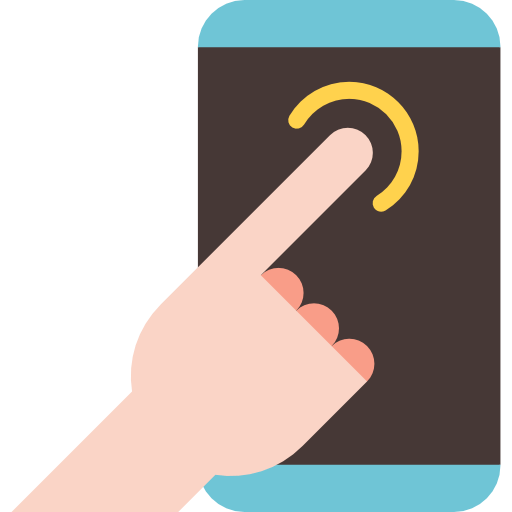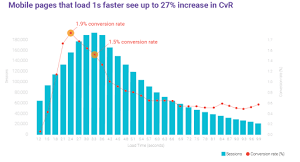Why Mobile responsive sites matter.
By: Rajat Kumar | Last Updated: June 05, 2018
Introduction to why mobile responsive site important:
Today we are going to learn new era of internet applications and web experience, so before take deep dive into topic we have to learn why mobile site is a crucial for every company or single entity.
As users spend more time on mobile devices, getting mobile sites right is crucial to success. If your client’s website is too slow to load, users will drop off. On the other hand, a fast-loading site with bad UX design makes it hard for users to complete their desired action. In a mobile-led world, consumer expectations are high. Learn the importance of mobile speed and UX in this module.
So in this topic we are going to learn why mobile site is important and how to improve your mobile site in theoretical basis. In some next articles I am going to discuss some practical techniques and tools to debug your mobile site to make better user experience.
1. Basics of mobile sites
When we talk about mobile sites, we’re referring to Internet-enabled properties that have specific Internet-based functionality for mobile devices.
- They’re accessed through the mobile device’s web browser (Safari, Chrome, etc.)
- They don’t need to be downloaded or installed to a device
- The term 'mobile sites (mSites)' can be used interchangeably with 'mWeb' in this conversation
Why do users engage with mobile sites?
- Easy to discover: Mobile sites are easily discoverable
- Lightweight: Does not require device memory for installation
- Intuitive: Users are familiar with how websites work
What are the benefits of Mobile Sites for businesses?
- Build once, run everywhere Mobile Sites will work across iOS, Android, and all other platforms with a browser connection
- Adaptability Your client can build a responsive site to address both phones and tablets rather than building two distinct apps for each device
- Shorter development timelines Mobile Sites allow for easy updating (users don’t need to accept or install your updates)
- Lower development costs Mobile sites are generally less expensive to build because they use a single coding language (HTML)
- The web is open for all Mobile sites require no approvals, revenue sharing, or marketplaces
- Tracking is simpler Analytics and Conversion Tracking can extend to your client's mobile site, instead of installing a software development kit (SDK).
2. User expectations
Today’s user experience on the mobile web is broken: subpar load times lead to high bounce rates, poor rendering and animation causes confusion, and broken checkout flows frustrate users. Eliminating extra seconds staring at a blank screen will get consumers to engage more often with your client’s site, which in turn will increase the value per user/visit.
That’s why mWeb performance is becoming such a hot topic these days (e.g., Accelerated Mobile Pages, Progressive Web Apps). Performance is not just something developers need to worry about, but an essential design feature. A beautiful site with poor performance won't do much, except drive the user away.
Website developers are faced with a website “obesity” crisis. According to the Mobile HTTP Archive, the average page served to mobile devices weighs almost 2MB in size, and contains an unprecedented number of resources (such as images, videos, scripts and other page components), as well as an equally unprecedented number of redirects.

In 2011, the average page served to mobile was just 390 KB, which, if you can remember that far back, actually seemed pretty big at the time. Today the average page is more than five times larger than that.
Additionally, users are consuming more rich content (e.g., video) on smartphones. Cellular networks are often capacity constrained (e.g., network throttling, limited investment in infrastructure) and carriers are likely not keeping up with the needs and demands of this increasingly I-Want-To-Consume-Rich-Content-On-Mobile mindset.
Users respond by leaving the page. It is no surprise, then, that mobile conversion rates are much lower than what they are on desktop!

In a recent Google poll, almost half of the respondents said their top frustration when browsing the web on their mobile device was waiting for slow pages to load.
60% of mobile users expect mobile websites to load within 3 seconds. And on average, 75% of people will abandon a mobile website if it takes any longer than 5 seconds to load.
3. Impact on conversions and interaction

Slow is always bad, especially in mobile. It hurts performance, in terms of site abandonment, bounce rates, conversation rates and retention. It also slows the Google crawler, which hurts crawl efficiency and leads to fewer pages being indexed. That’s terrible for the site owner and for consumers.
Reducing page load time boosts sales and conversion rates significantly. A research study found that conversions per second improved as load times went down. Here’s another case study in load time that shows that when clients speed up their site, revenue goes up. And when load times deteriorate, revenue goes down.
Correlation between speed and conversion rate:

*Some of the pages that were faster than 2.4 seconds experienced a lower conversion rate. While we don’t know for sure, the most common reason is because a lot of the faster pages are 404/error pages.
4. Why UX matters

UX & conversion rate optimization can open new budget opportunities by improving the profitability of your clients through increasing mobile conversion rates.
4.1 Cost-effectiveness
UX & conversion rate optimization capitalizes on traffic your clients already have. This means your clients aren’t spending more money getting visitors to their site, just doing a better job of converting them once they get there. Optimization increases their return on their current investments, and converting a higher percentage of their current visitors is much more cost-effective than attracting new ones.
4.2 Lowering customer acquisition costs
Doubling your client's’ conversion rate means halving their cost-per-acquisition (CPA), or how much each new customer costs to them.
4.3 More money to spend on additional acquisition
More profit means extra money to spend on acquiring new users. When your client's’ conversion rate increases, suddenly they can afford to advertise in other media (online and offline), which makes their company much more robust.
4.4 Small changes make big impact
Evaluating a page's or site's sales funnel can uncover opportunities to reduce anxiety and friction for the user. What sometimes catches people off guard is that even the smallest change can greatly increase conversions on a page. In fact, there have been tests that prove that simply changing the color or the wording on a button (call-to-action) can increase conversion rate by as much as 200%.
5. Discoverability
Broaden your website's audience and increase revenue.
Online advertisements are one way to monetize your site or app. Google's AdSense site has resources and instructions to help you through that. To earn those revenues you need to bring more people to your site.

5.1 Search Optimization
Search engine is essential part of any web application in term of user information, organic traffic, organic customer, and correct user search content. If you know how to SEO technique work then must try and save some money in paid marketing otherwise you can hire SEO Expert Company to do these complex things for you.

Use your site structure and a robots.txt file to improve your search engine optimization. Or you can read our SEO article for beginner. Learn More
5.2 Social Discovery
You can make web and app content more relevant and structured way to appear proper. The social structured data tags are the way your site appears when shared via social media by adding a few lines of code to each page. This can help bring more people to your site by providing previews with richer information than would otherwise be available.

This social sharing of web content to social media like: Facebook, Twitter, Google+ and Instagram etc. gives you much more descriptive information about your service, product, recipe, article, music and video.
A few lines of code on each page can bring more people to your site by providing previews with rich information. Or you can read our social media optimization article for beginner Learn More
Source: Google
If you find this article worth to you please hit kudos, comment your view, & share to your friends to make worth to us being writing technical articles.